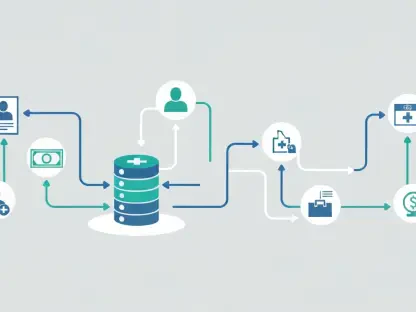The article, “Don’t Get Caught in the DevOps Loop,” explores the impact of the DevOps movement on software development best practices, emphasizing its role in significantly reducing the time and effort required to build and deploy software. According to an Atlassian survey, 66% of respondents recognize DevOps for enhancing software quality. However, the implementation of DevOps best practices differs widely across organizations. The idealized DevOps loop—from planning to release—is scarcely followed precisely. Instead, Mitch Ashley from the Futurum Group argues that the DevOps loop merely repurposes the steps of a waterfall model into a cyclical process, which does not reflect real-life software development dynamics.
The Essence of DevOps
Defining DevOps as a Collaborative Methodology
DevOps is better understood as a collaborative methodology that connects historically separate functions of software development and IT operations through specific tools and practices. The core challenge lies in addressing the real-life frictions when moving software artifacts through a pipeline. DevOps emphasizes automation, smaller work units, and continuous delivery, akin to a multiverse rather than a linear loop. The sprint methodology is central to DevOps workflows, breaking down projects into short, manageable iterations, or sprints, typically lasting two to four weeks. This dynamic allows various teams to work independently and at different paces, with feedback loops and quick responses to changes enhancing overall efficiency.
In practice, DevOps supports distributed development, both geographically and among team members, encouraging continuous integration and collaboration to build larger systems. By prioritizing individual interactions over rigid tools and processes, DevOps enables teams with diverse skill sets to work concurrently yet cohesively. The ultimate goal is to combine their efforts for deployment into production and test environments. The method creates a versatile foundation wherein project managers, developers, stakeholders, and customers actively engage, maintaining alignment and delivery velocity. Ashley concludes that DevOps empowers individuals to work autonomously while ensuring that collaborative efforts align during releases.
Real-Life Frictions and Solutions
The real-life frictions of moving software artifacts through a pipeline often expose the limitations of DevOps when misunderstood or improperly implemented. These frictions often arise from a failure to adequately adapt workflows to the specific needs of an organization. Issues like misaligned team goals, insufficient automation, and a lack of feedback can cripple the DevOps process. By emphasizing the need for thoughtful implementation, DevOps proponents argue that the methodology can overcome these frictions. Indeed, when effectively adopted, DevOps practices can bridge gaps between development and operational teams, allowing for more cohesive project execution and fewer bottlenecks.
Continuous delivery and integration stand out as crucial components in mitigating these frictions. Through automation and smaller work units, DevOps reduces the manual overhead associated with traditional software development methodologies. Each iteration of the development process becomes an opportunity to test and refine features, providing a steady stream of feedback that can be used to guide future development. By fostering a culture of persistent improvement and iteration, DevOps helps organizations navigate the complexities of software development more smoothly, enabling quicker releases and higher quality output.
Benefits of DevOps in Practice
Enhancing Collaboration and Efficiency
The primary benefit of implementing DevOps best practices is the enhancement of collaboration and efficiency across development and operational teams. When teams operate in silos, communication breakdowns and conflicting priorities often arise, causing delays and inefficiencies. DevOps bridges these gaps by promoting a culture of shared responsibility and open communication. By fostering a collaborative environment, teams can work towards common goals, readily sharing information and resources to overcome obstacles.
Moreover, DevOps practices encourage the use of sophisticated tools and automation, which streamlines repetitive tasks and reduces the potential for human error. Automated testing, deployment, and monitoring tools enable developers to focus on creating innovative solutions rather than getting bogged down in routine maintenance tasks. This approach significantly reduces time-to-market for new features and improvements, allowing companies to respond more rapidly to changing market demands and user feedback.
Versatility in Distributed Development
The article “Don’t Get Caught in the DevOps Loop” delves into how the DevOps movement impacts software development best practices. It highlights DevOps’ ability to drastically cut down the time and effort necessary for building and deploying software. According to a survey conducted by Atlassian, 66% of respondents acknowledge that DevOps improves software quality. However, the adoption of DevOps best practices varies greatly across different organizations. The concept of the ideal DevOps loop—from planning to release—is rarely adhered to exactly as envisioned. Instead, Mitch Ashley from the Futurum Group suggests that the DevOps loop is essentially a reconfiguration of the traditional waterfall model into a cyclic process, which doesn’t effectively mirror the realities of software development. This deviation underscores the gap between theoretical models and practical application, illustrating that while DevOps holds promise for enhancing software quality and development efficiency, its real-world implementation is often fraught with complexities and variations.









